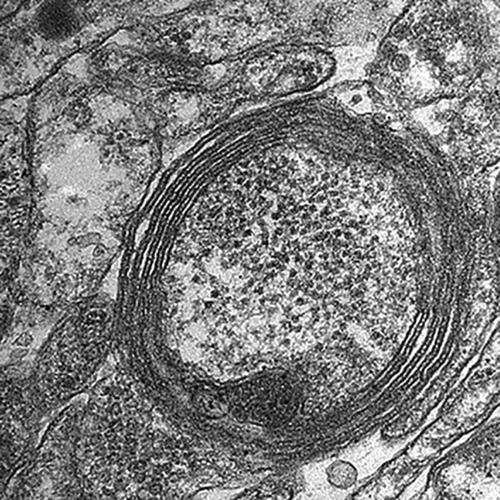当前位置:
X-MOL 学术
›
J. Morphol.
›
论文详情
Our official English website, www.x-mol.net, welcomes your feedback! (Note: you will need to create a separate account there.)
Fine structure of the nervous system of Cercaria parvicaudata Stunkard & Shaw, 1931 (Digenea, Renicolidae)
Journal of Morphology ( IF 1.5 ) Pub Date : 2020-05-05 , DOI: 10.1002/jmor.21137 Sofia A Denisova 1 , Sergei V Shchenkov 1
Journal of Morphology ( IF 1.5 ) Pub Date : 2020-05-05 , DOI: 10.1002/jmor.21137 Sofia A Denisova 1 , Sergei V Shchenkov 1
Affiliation

|
The biology of free‐living and parasitic Platyhelminthes is diverse. Taking into account the widespread prevalence of parasitic flatworms, Digenea is the least studied group regarding the fine structure of nervous system especially of the cercarial life stage. Here, we present a description of the fine structure of central nervous system (CNS) and two types of uniciliate sensory papillae of xiphidiocercaria Cercaria parvicaudata (Microphalloidea, Renicolidae). The present study documents that C. parvicaudata has a complex nervous system that includes a well‐developed ganglion with a cortex of perikarya and glia‐like sheaths, myelin‐like structures within one of the dorsal nerve cords and four types of polarized synapses between neurites. Different types of neurons in the CNS could not be distinguished on ultrastructural level due to high similarity in their fine structure. Shared polarized synapses with high electron density of presynaptic components are numerous in the neuropile and nerve cords of this larva. Within the larval body, we detected specialized “support” processes that relate to different tissues. Some “support” processes are also closely related to the nervous system of C. parvicaudata, where they are considered as glia‐like structures. In this case, the fine structure of glia‐like “support” cells of C. parvicaudata differs from those described as glia‐like cells in adult flatworms. We suggest a wide prevalence of glia‐like cells among cercariae, as well as the fact that glia‐like structures in digenean nervous systems can develop from various nonneuronal tissues.
中文翻译:

Cercaria parvicaudata Stunkard & Shaw, 1931 (Digenea, Renicolidae) 神经系统的精细结构
自由生活和寄生的扁形动物的生物学是多种多样的。考虑到寄生扁虫的广泛流行,Digenea 是关于神经系统精细结构,尤其是尾蚴生命阶段的精细结构研究最少的群体。在这里,我们介绍了中枢神经系统 (CNS) 的精细结构和两种类型的 xiphidiocercaria Cercaria parvicaudata(Microphalloidea,Renicolidae)的单纤毛感觉乳头。本研究证明 C. parvicaudata 有一个复杂的神经系统,包括一个发育良好的神经节,带有核膜和胶质样鞘,背神经索之一内的髓鞘样结构和神经突之间的四种极化突触. 由于其精细结构的高度相似性,在超微结构水平上无法区分中枢神经系统中不同类型的神经元。在这种幼虫的神经桩和神经索中,具有高电子密度的突触前成分的共享极化突触很多。在幼虫体内,我们检测到与不同组织相关的专门“支持”过程。一些“支持”过程也与 C. parvicaudata 的神经系统密切相关,它们被认为是神经胶质样结构。在这种情况下,C. parvicaudata 的神经胶质样“支持”细胞的精细结构与成年扁虫中描述的神经胶质样细胞不同。我们建议尾蚴中广泛存在胶质细胞样细胞,以及双基因神经系统中胶质细胞样结构可以从各种非神经元组织发育的事实。
更新日期:2020-05-05
中文翻译:

Cercaria parvicaudata Stunkard & Shaw, 1931 (Digenea, Renicolidae) 神经系统的精细结构
自由生活和寄生的扁形动物的生物学是多种多样的。考虑到寄生扁虫的广泛流行,Digenea 是关于神经系统精细结构,尤其是尾蚴生命阶段的精细结构研究最少的群体。在这里,我们介绍了中枢神经系统 (CNS) 的精细结构和两种类型的 xiphidiocercaria Cercaria parvicaudata(Microphalloidea,Renicolidae)的单纤毛感觉乳头。本研究证明 C. parvicaudata 有一个复杂的神经系统,包括一个发育良好的神经节,带有核膜和胶质样鞘,背神经索之一内的髓鞘样结构和神经突之间的四种极化突触. 由于其精细结构的高度相似性,在超微结构水平上无法区分中枢神经系统中不同类型的神经元。在这种幼虫的神经桩和神经索中,具有高电子密度的突触前成分的共享极化突触很多。在幼虫体内,我们检测到与不同组织相关的专门“支持”过程。一些“支持”过程也与 C. parvicaudata 的神经系统密切相关,它们被认为是神经胶质样结构。在这种情况下,C. parvicaudata 的神经胶质样“支持”细胞的精细结构与成年扁虫中描述的神经胶质样细胞不同。我们建议尾蚴中广泛存在胶质细胞样细胞,以及双基因神经系统中胶质细胞样结构可以从各种非神经元组织发育的事实。


























 京公网安备 11010802027423号
京公网安备 11010802027423号